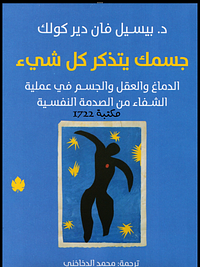Take a photo of a barcode or cover
challenging
dark
emotional
informative
inspiring
reflective
sad
slow-paced
The most important takeaway from this book is that no one's healing and recovery from the abuse and trauma of their past is the same as another's. A common thread in healing is discovering the safety of being seen and accepted, which many of us didn't receive as children. In that safety, we can learn how to see and experience our inner world, giving names to the parts of ourselves that keep us trapped. Seeing our edges allows us the agency and resilience to discover just how expansive and collaborative our realities can be.
As someone who has experienced the benefits of meditation and yoga and has recently started taking improv classes, this book inspired me to explore additional modalities while also deepening my appreciation for the journey I've had thus far.
As someone who has experienced the benefits of meditation and yoga and has recently started taking improv classes, this book inspired me to explore additional modalities while also deepening my appreciation for the journey I've had thus far.
The author was successful in making the content easily digestible. This is for those who have an interest in how trauma impacts an individual through all stages of life and how we can begin to heal for some of those traumas.
emotional
informative
slow-paced
inspiring
challenging
emotional
informative
inspiring
reflective
sad
medium-paced
informative
sad
medium-paced
Very informative, feels like both a self help book and a history of Van der Kolk's career. Shows how our understanding of treating mental illness, and the prevention of the causes of such illness in the first place are lacking, but the final chapters give insightful advice not just in to what can help but why it is helpful
informative
reflective
tense
medium-paced
very informative, not bad 👌
challenging
emotional
hopeful
informative
reflective
medium-paced
TW: child death and sexual assault
This book is very obvious in its theoretical orientation and approach, which I don't mind. I think this book is best when it discusses children and worse when it discusses women and veterans. Obviously, trauma research began with vets, but there is looming, unchallenged sympathy for soldiers and veterans who do awful things overseas and then suffer because of their guilt. Obviously, Kolk can't tell his patients they *are* actually bad people for killing children or r*ping women overseas, but he also didn't have to tell us these specific anecdotes; I don't think they added anything to the story, and honestly, I think they make his points less compelling in those sections because my sympathy just doesn't extend that far.
On a different note, I think his descriptions of the inner workings and the bureaucracy behind diagnostic development and intervention funding were interesting.
This book is very obvious in its theoretical orientation and approach, which I don't mind. I think this book is best when it discusses children and worse when it discusses women and veterans. Obviously, trauma research began with vets, but there is looming, unchallenged sympathy for soldiers and veterans who do awful things overseas and then suffer because of their guilt. Obviously, Kolk can't tell his patients they *are* actually bad people for killing children or r*ping women overseas, but he also didn't have to tell us these specific anecdotes; I don't think they added anything to the story, and honestly, I think they make his points less compelling in those sections because my sympathy just doesn't extend that far.
On a different note, I think his descriptions of the inner workings and the bureaucracy behind diagnostic development and intervention funding were interesting.
THIS IS NOT A BOOK FOR HEALING, ITS AN ACADEMIC RESOURCE.
comprehensive regarding the many facets of trauma, including its causes, symptoms, and various treatments options.
having said that, this book is from an academic perspective which may not be to everyone’s liking. on the other hand, if you have knowledge of basic psychology you may find there is not a lot of new info in this book for you to learn.
if anyone does have PTSD, that DBT and CBT therapy are also extremely important apart from holistic approaches and shown empirically to be helpful and should also be a large focus during healing. using medications to allow yourself to start therapy is nothing to be ashamed of and helps with coping; but the author is right in that it will not act as a permanent cure.
update: heard the author is a creep. disappointing
comprehensive regarding the many facets of trauma, including its causes, symptoms, and various treatments options.
having said that, this book is from an academic perspective which may not be to everyone’s liking. on the other hand, if you have knowledge of basic psychology you may find there is not a lot of new info in this book for you to learn.
if anyone does have PTSD, that DBT and CBT therapy are also extremely important apart from holistic approaches and shown empirically to be helpful and should also be a large focus during healing. using medications to allow yourself to start therapy is nothing to be ashamed of and helps with coping; but the author is right in that it will not act as a permanent cure.
update: heard the author is a creep. disappointing




